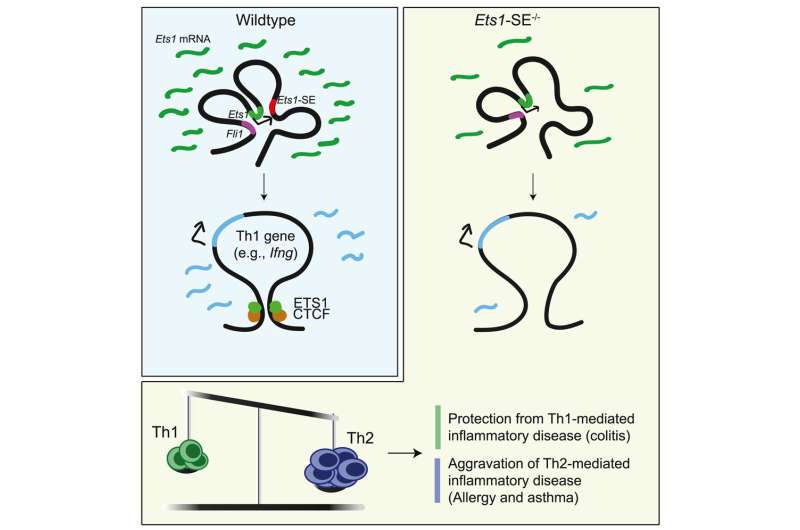This article has been reviewed according to Science X's editorial process and policies. Editors have highlighted the following attributes while ensuring the content's credibility:
fact-checked
peer-reviewed publication
trusted source
proofread
Research provides better understanding into how genes make us prone to allergies

New research is bolstering scientific understanding behind why some people are more prone to allergies than others. Researchers in the Perelman School of Medicine at the University of Pennsylvania identified how genetic differences that alter a specific protein called ETS1 can affect our body's response to allergies.
They found that small changes in ETS1 in an animal model can lead to an increased likelihood for allergic reactions that cause inflammation. The findings were published recently in Immunity.
The United States Centers for Disease Control and Prevention reports that allergies rank as the sixth most prevalent cause of chronic illness in the U.S., resulting in an annual expenditure exceeding $18 billion. While previous research has established a strong genetic basis for allergies and identified specific genetic sequence variations which predispose for these chronic diseases, how our DNA can affect our chances of developing an allergy remains unclear. But understanding this could lead to improved research and potential new treatments.
By using modern genomics and imaging techniques, a collaborative team of researchers co-led by Penn's Golnaz Vahedi, Ph.D., an associate professor of Genetics, and Jorge Henao-Mejia, MD, Ph.D., an associate professor of Pathology and Laboratory Medicine, found that the ETS1 protein plays a role in controlling a type of immune cell called CD4+ T helper cells, which are important in allergic reactions and help orchestrate the immune response by activating and coordinating other immune cells.
DNA interactions within the genomic segment encompassing the ETS1 gene control how much of the ETS1 protein is made.
"We discovered that these interactions, work like a dimmer switch," said Vahedi. "When there are changes in the DNA in this area, it can mess up the dimmer switch, causing problems with controlling the ETS1 protein. This can lead to imbalances in our immune cells and cause allergic inflammations."
While there has been progress in understanding genetic traits that follow predictable patterns, like those passed down from parents, it's been more challenging to understand conditions that involve many different genes and are common in populations. These complex conditions cannot be explained by simply "turning off" one gene.
Instead, they may be caused by small changes in the DNA that affect how genes work together. However, researchers still do not know much about how these changes in DNA relate to how our genes are organized or how they affect how genes are expressed in most complex diseases.
"This work demonstrates how small differences in our DNA can disturb the balance between our immune cells, resulting in significant observable characteristics in patients. This phenomenon may occur in other common diseases such as autoimmune disorders," said Henao-Mejia.
More information: Aditi Chandra et al, Quantitative control of Ets1 dosage by a multi-enhancer hub promotes Th1 cell differentiation and protects from allergic inflammation, Immunity (2023). DOI: 10.1016/j.immuni.2023.05.004



















